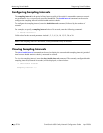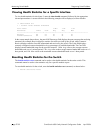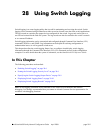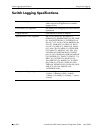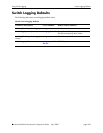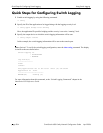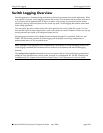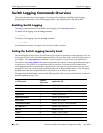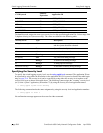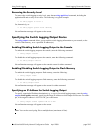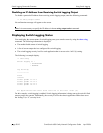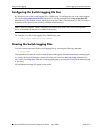
Using Switch Logging Switch Logging Overview
OmniSwitch 6600 Family Network Configuration Guide April 2006 page 28-5
Switch Logging Overview
Switch logging uses a formatted string mechanism to process log requests from switch applications. When
a log request is received, switch logging compares the severity level included with the request to the sever-
ity level stored for the application ID. If there is a match, a log message is generated using the format
specified by the log request and placed on the switch log queue. Switch logging then returns control back
to the calling application.
You can specify the path to where the log file will be printed in the switch’s flash file system. You can
also send the log file to other output devices, such as the console or remote IP address. In this case, the log
records generated are copied to all configured output devices.
Switch logging information can be displayed and configured through CLI commands, WebView, and
SNMP. The information generated by switch logging can be helpful in resolving configuration or
authentication issues, as well as general errors.
Note. Although switch logging provides complementary functionality to switch debugging facilities, the
switch logging commands are not intended for use with low-level hardware and software debugging
functions.
The configuration snapshot command can be used to capture and save all switch logging configuration
settings in a text file that can be viewed, edited, and used as a configuration file. See the “Working with
Configuration Files” chapter of the OmniSwitch 6600 Family Switch Management Guide for details.




